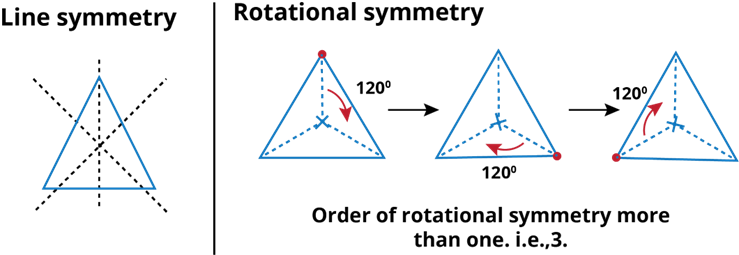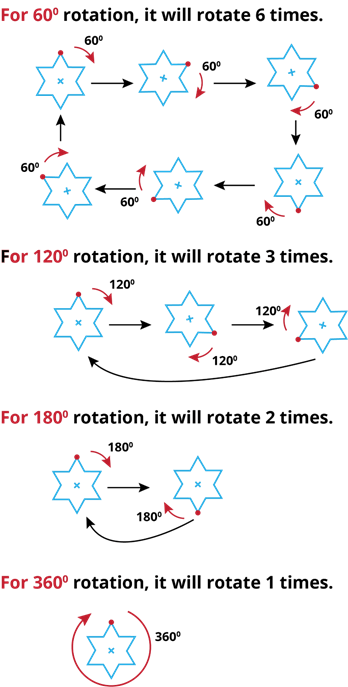
Table of Contents
ToggleClass 7, Maths, Chapter 14, Exercise 14.1 Solutions
Q.1. Name any two figures that have both line symmetry and rotational symmetry.
Ans: Equilateral triangle, square and Circle.
Q.2. Draw, wherever possible, a rough sketch of
(i) a triangle with both line and rotational symmetries of order more than 1.
(ii) a triangle with only line symmetry and no rotational symmetry of order more than 1.
(iii) a quadrilateral with a rotational symmetry of order more than 1 but not a line symmetry.
(iv) a quadrilateral with line symmetry but not a rotational symmetry of order more than 1.
Ans:
(i) A triangle with both line and rotational symmetries of order more than 1.
A triangle with both line and rotational symmetries of order more than 1 is an equilateral triangle.

(ii) A triangle with only line symmetry and no rotational symmetry of order more than 1.
A triangle with only line symmetry and no rotational symmetry of order more than 1 is isosceles triangle.

(iii) A quadrilateral with a rotational symmetry of order more than 1 but not a line symmetry.
it is not possible to draw because, a quadrilateral with a line symmetry may have rotational symmetry of order one but not more than one.
(iv) A quadrilateral with line symmetry but not a rotational symmetry of order more than 1.
A quadrilateral with line symmetry but not a rotational symmetry of order more than 1 is trapezium.

Q.3. If a figure has two or more lines of symmetry, should it have rotational symmetry of order more than 1?
Ans: Yes, because every line through the centre forms a line of symmetry, then it will have rotational symmetry for every angle.
Q.4. Fill in the blanks:

Ans:

Q.5. Name the quadrilaterals which have both line and rotational symmetry of order more than 1.
Ans: Square has both line and rotational symmetry of order more than 1.

Q.6. After rotating by 60° about a centre, a figure looks exactly the same as its original position. At what other angles will this happen for the figure?
Ans: The other angles are, 120°, 180°, 240°, 300°, 360°

Q.7. Can we have a rotational symmetry of order more than 1 whose angle of rotation is (i) 45°? (ii) 17°?
Ans:
(i) 45°?
Yes. We can have a rotational symmetry of order more than 1 whose angle of rotation is 45o and rotations are 8.
(ii) 17°?
No. If the angle of rotational is 17°, then symmetry of order is not possible because 360° is not complete divided by 17°.

